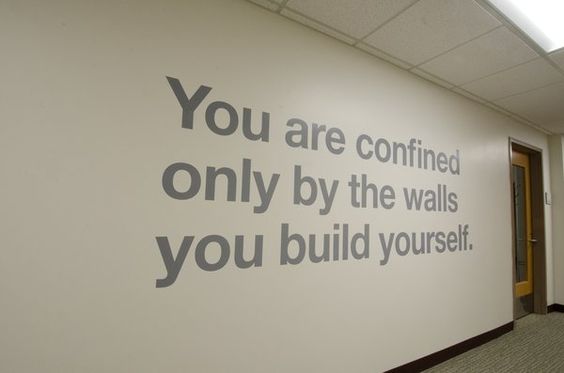Wall wrap advertising has become an increasingly popular method for businesses to showcase their brands, products, and services in a highly visible and impactful way. This form of advertising transforms ordinary walls into dynamic, eye-catching canvases, making it a powerful tool for reaching large audiences. In this article, we’ll delve into the essentials of wall wrap advertising, explore its various types and benefits, and provide guidance on creating a successful campaign. We’ll also answer some common questions about wall wraps.
What is Wall Wrap Advertising?
Wall wrap advertising involves covering large surfaces, such as walls of buildings, with graphic advertisements made from vinyl or other durable materials. These wraps can be used both indoors and outdoors, making them versatile for various marketing needs. Wall wraps are designed to be visually appealing, capturing the attention of passersby and leaving a lasting impression.
The primary purpose of wall wrap advertising is to maximize exposure in high-traffic areas. By turning a plain wall into an advertising space, businesses can reach a broad audience in a cost-effective manner. Whether it’s for brand promotion, product launches, or event advertising, wall wraps offer a unique way to convey messages vividly and memorably.
Wall Wrap Advertising Types
Wall wrap advertising comes in several types, each suited to different environments and purposes. Here are the most common types:
1. Indoor Wall Wraps
Indoor wall wraps are used within buildings, such as shopping malls, airports, office spaces, and retail stores. They are ideal for promoting products, services, or special offers to customers already within the premises. Indoor wraps are typically made from high-quality vinyl that adheres well to interior surfaces and can be easily removed without damaging the walls.

2. Outdoor Wall Wraps
Outdoor wall wraps are designed for exterior surfaces, such as building facades, fences, and construction site barriers. These wraps are made from durable, weather-resistant materials that can withstand various environmental conditions. Outdoor wall wraps are perfect for reaching a wider audience, as they are visible to pedestrians, motorists, and public transit users.

3. Custom Wall Wraps
Custom wall wraps are tailored to fit specific marketing needs and spaces. These wraps can be designed to match the brand’s aesthetic, color scheme, and messaging. Custom wraps provide flexibility in terms of design and application, making them suitable for various advertising goals and locations.

4. 3D Wall Wraps
3D wall wraps add an extra dimension to traditional wall wraps by incorporating elements that protrude from the surface. This type of wrap creates a more immersive and engaging experience for viewers, making the advertisement more memorable. 3D wall wraps are often used for special campaigns or to create a unique visual impact in high-traffic areas.

Benefits of Wall Wrap Advertising
Wall wrap advertising offers numerous advantages, making it a valuable investment for businesses. Here are some key benefits:
1. High Visibility
Wall wraps are hard to miss, especially when placed in high-traffic areas. Their large size and striking designs ensure that they capture the attention of passersby, making them an effective way to increase brand awareness and visibility.
2. Cost-Effective
Compared to other forms of advertising, such as TV or radio ads, wall wraps are relatively cost-effective. Once installed, they provide continuous exposure without recurring costs, offering a good return on investment.
3. Versatility
Wall wraps can be used in various locations, both indoors and outdoors. This versatility allows businesses to target different audiences and adapt their advertising strategies to suit different environments.
4. Customizability
Wall wraps can be customized to reflect the brand’s identity and message. This level of personalization ensures that the advertisement resonates with the target audience and stands out from the competition.
5. Durability
High-quality wall wraps are made from durable materials that can withstand environmental factors like sunlight, rain, and wind. This durability ensures that the advertisement remains vibrant and intact for extended periods.
6. Easy Installation and Removal
Wall wraps are relatively easy to install and remove. Professional installers can apply the wraps quickly, and they can be removed without causing damage to the underlying surfaces, making them a convenient advertising option.
How to Create a Successful Wall Wrap Advertising Campaign
Creating a successful wall wrap advertising campaign involves several key steps. Here’s a comprehensive guide to help you get started:
1. Define Your Objectives
Before designing your wall wrap, clearly define your campaign objectives. Are you looking to increase brand awareness, promote a new product, or advertise an event? Knowing your goals will help guide the design and placement of your wall wrap.
2. Identify Your Target Audience
Understanding your target audience is crucial for creating an effective wall wrap. Consider the demographics, interests, and behaviors of your audience to ensure your message resonates with them.
3. Choose the Right Location
Select a location that maximizes visibility and reaches your target audience. High-traffic areas, such as busy streets, shopping centers, and transit hubs, are ideal for outdoor wraps, while indoor wraps should be placed in locations where your audience frequents.
4. Design an Eye-Catching Wrap
Work with a professional designer to create a visually appealing and impactful wall wrap. Use bold colors, clear fonts, and high-resolution images to capture attention. Ensure that your brand logo and message are prominent and easy to read.
5. Use High-Quality Materials
Invest in high-quality vinyl and printing to ensure the durability and visual appeal of your wall wrap. High-quality materials will withstand environmental conditions and maintain their appearance over time.
6. Obtain Necessary Permits
Check local regulations and obtain any necessary permits before installing your wall wrap, especially for outdoor locations. Compliance with local laws will prevent any legal issues and ensure a smooth installation process.
7. Hire Professional Installers
For the best results, hire professional installers to apply your wall wrap. They have the expertise and equipment to ensure a smooth and seamless installation, avoiding bubbles, wrinkles, and other imperfections.
8. Monitor and Evaluate
After installing your wall wrap, monitor its performance and evaluate its impact. Use metrics such as increased foot traffic, sales, or social media engagement to measure the success of your campaign. Gather feedback and make adjustments as needed for future campaigns.
Wall Wrap Advertising Examples
Example 1: Retail Store Promotion
A popular clothing brand used indoor wall wraps to promote its seasonal sale inside a shopping mall. The wraps featured vibrant images of the latest fashion trends and clear call-to-action messages, attracting shoppers and boosting sales during the promotion period.
Example 2: Construction Site Advertising
A tech company utilized outdoor wall wraps on the fences surrounding its new headquarters under construction. The wraps showcased the company’s latest innovations and upcoming product launches, generating buzz and anticipation among the public and media.
Example 3: Event Advertising
A music festival used 3D wall wraps to advertise the event on the exterior walls of the venue. The wraps featured lifelike images of performers and interactive elements, creating excitement and driving ticket sales.
Conclusion
Wall wrap advertising is a dynamic and versatile method for promoting brands, products, and services. With its high visibility, cost-effectiveness, and customizability, wall wraps offer a unique way to capture attention and engage audiences. By understanding the different types of wall wraps, their benefits, and how to create a successful campaign, businesses can leverage this powerful advertising tool to achieve their marketing goals.
The Media Ant is an advertising agency that excels in planning and purchasing media space. It helps businesses reach their target audiences effectively by strategically placing ads across various traditional and digital channels.
FAQs on Wall Wrap Advertising
Is wall wrap necessary?
Wall wraps are not always necessary, but they are highly effective for businesses looking to maximize visibility and impact. They offer a unique way to advertise in high-traffic areas and can significantly enhance brand awareness and engagement.
What is vinyl wrap for walls?
Vinyl wrap for walls is a type of adhesive graphic made from durable vinyl material. It is used to cover large wall surfaces with advertisements, branding, or decorative designs. Vinyl wraps are versatile, long-lasting, and can be customized to fit various applications.
What is wall sarking for?
Wall sarking is a building material used to provide a protective layer between the exterior cladding and the structural frame of a building. It helps improve insulation, weather resistance, and overall energy efficiency. Wall sarking is not directly related to advertising but is part of the construction process.
Is house wrap good or bad?
House wrap is a synthetic material used in construction to protect buildings from moisture and air infiltration while allowing water vapor to escape. It is generally considered good as it enhances the building’s durability, energy efficiency, and indoor air quality. Like wall sarking, house wrap is not directly related to advertising but plays a crucial role in construction.





